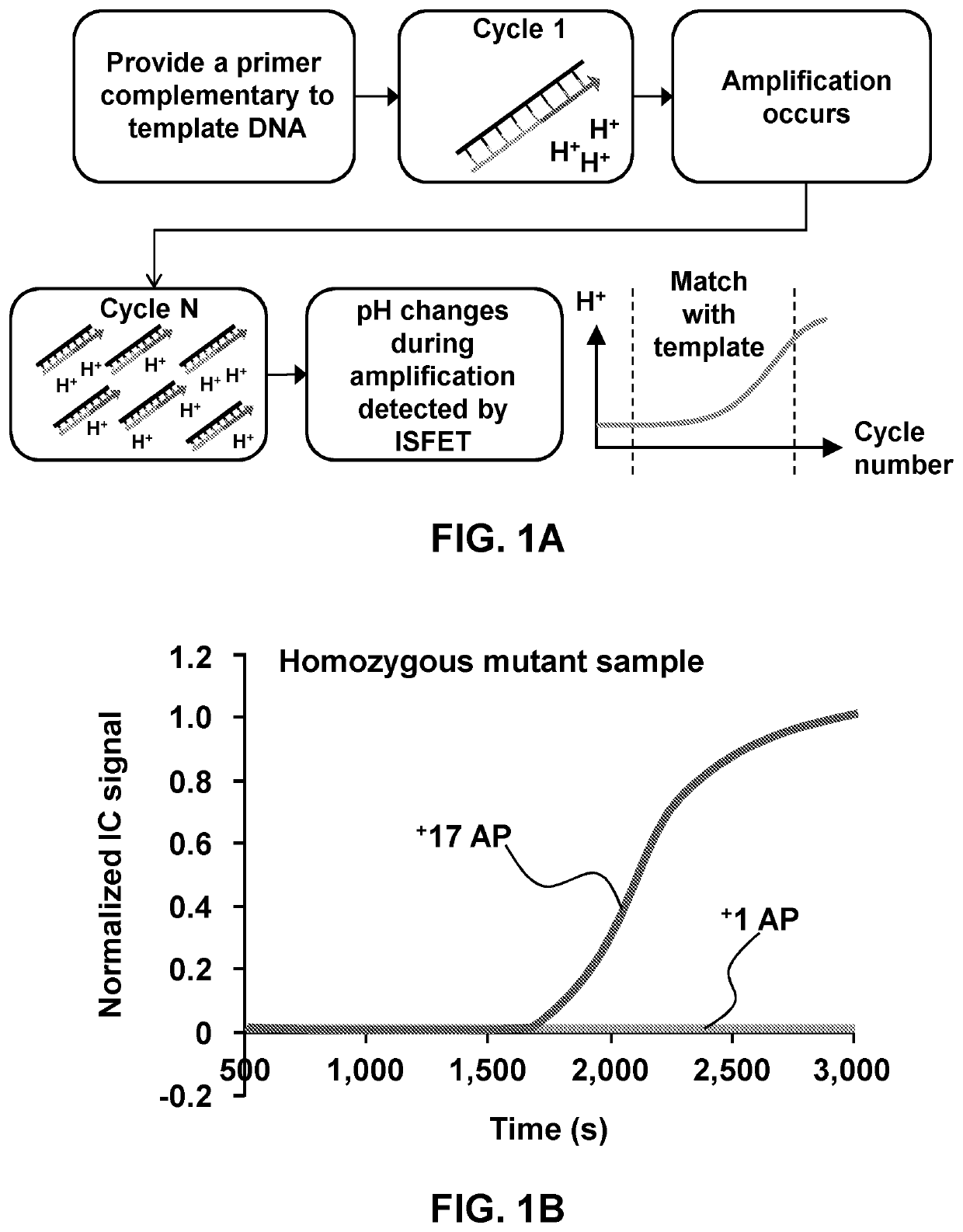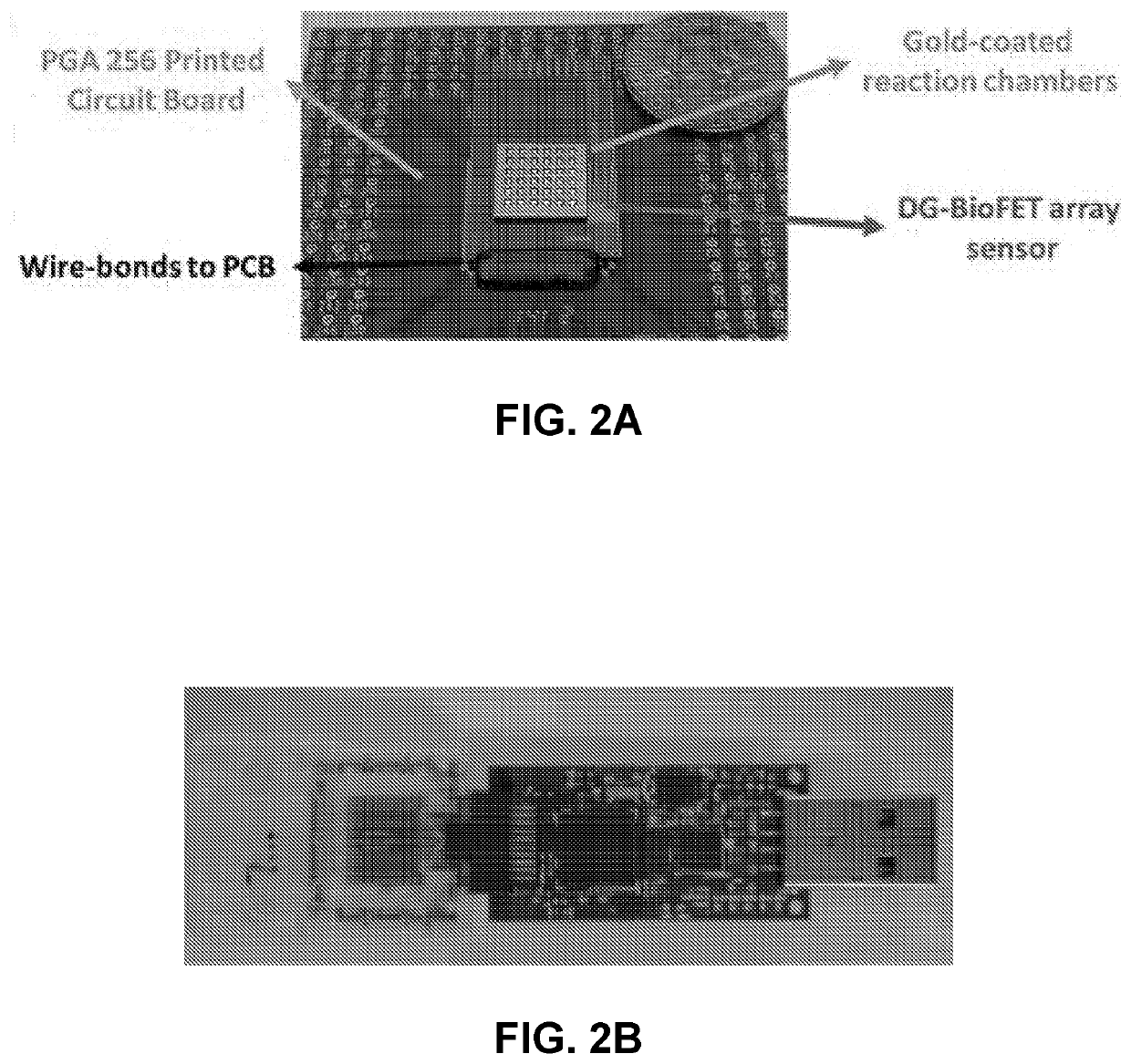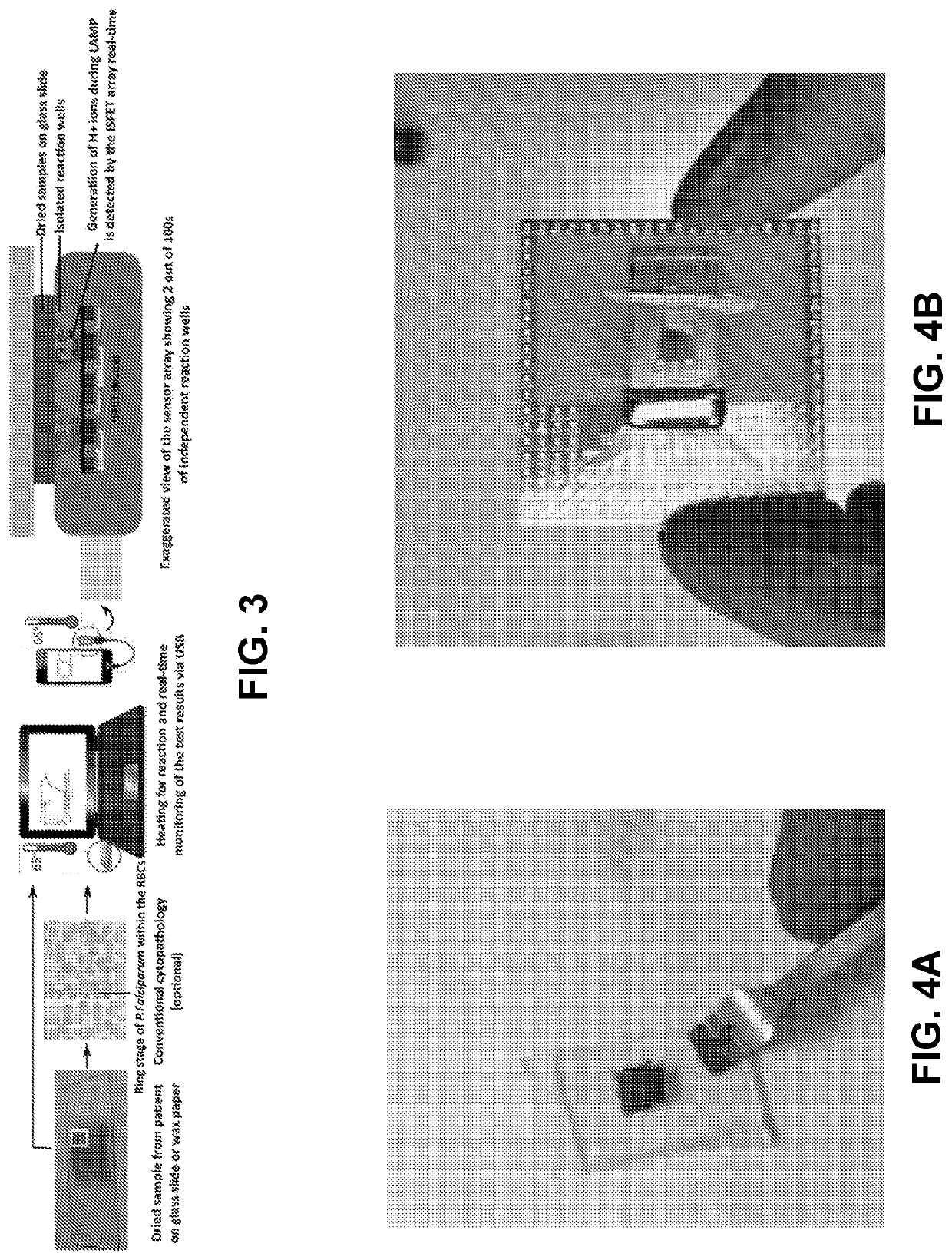Biomarker Detection From Fluid Samples
a technology of biomarkers and fluid samples, applied in the field of biomarker detection from fluid samples, can solve the problems of high false negative rate, high cost and time consumption, and many diagnostic tests rely on cell cultures, microscopy or immunoassays which are lacking sensitivity, etc., and achieve the effect of accurately and rapidly detecting target analytes
- Summary
- Abstract
- Description
- Claims
- Application Information
AI Technical Summary
Benefits of technology
Problems solved by technology
Method used
Image
Examples
example 1
uid Sample (Blood, Urine, Saliva, Etc.) Digital Amplification
[0123]Described herein is dried sample digital amplification (LAMP, PCR etc.) on a substrate (Glass, plastic, silicon etc.) with an array of microwells and with no / minimal sample processing. The drying of the sample allows processing of larger sample volumes (up to several milliliters of blood for e.g.) and preservation of pathogen nucleic acids in the sample for room temperature transportation and storage. Additional fixation of samples can be performed of the samples using common fixatives such as Formalin or acetone for extended storage of the samples for analysis.
[0124]Digital amplification (digital lamp, digital per etc.) is performed on the array of wells or microwells with dried sample in it. The array may have large number of wells (1e5-1e6) in line with large number of partitions required for digital amplification. This technique combines higher sample volume processing capability with superior sensitivity and lim...
example 2
of Bacteria in a Dried Blood Sample
[0172]Detecting extremely low target analyte or pathogen count (1-10 CFU / ml or lower) has been a fundamental challenge in the medical diagnostics' and food testing industry2 due to extremely low signal to noise ratio. Cell culture, which usually take 1-5 days, is the only way of detecting these low pathogen levels in any sample.1,3,4 Sepsis, a clinical syndrome that results from dysregulated inflammatory response to infection leading to organ dysfunction has very high morbidity and mortality.4 It is also estimated to be the most costly inpatient diagnosis, accounting for more than $23 billion annually in US alone.5 Since sepsis usually has very low pathogen counts (1-3 CFU / m1)6 the only way for diagnosis is culture followed by nucleic acid amplification or direct molecular detection after a positive blood culture.3 Blood cultures (or other sample cultures) are very time consuming (1-5 days), have a very high false negative rate and do not work for ...
example 3
ed / Dried Biomolecule Delivery to Micro / Nano-Well Arrays and Strategies for End-Point Multiplexed Detection of Nucleic Acid Targets
[0229]To deliver material, including biomolecules, enzymes and the like, into a micro-well array in a multi-step process, the material can be lyophilized or dried on a fluid barrier, such as beads-on-a-wax paper, and pulled down into the wells using centrifugation or magnetic pull down. Since in a micro-well array, cross contamination between two adjacent wells is a challenge, loading the enzyme through beads on a wax paper allows simultaneous loading of a large array of wells (>1e6) in a single step requiring less than 1 minute. The fluid barrier may be a substrate with a hydrophobic coating, such as wax paper with its hydrophobic wax coating. Various barriers are compatible with the methdos and systems provided herein, so long as the barrier prevents any fluid exchange between adjacent wells during the process.
[0230]A schematic illustration of the beads...
PUM
| Property | Measurement | Unit |
|---|---|---|
| volume | aaaaa | aaaaa |
| volume | aaaaa | aaaaa |
| volume | aaaaa | aaaaa |
Abstract
Description
Claims
Application Information
 Login to View More
Login to View More - R&D
- Intellectual Property
- Life Sciences
- Materials
- Tech Scout
- Unparalleled Data Quality
- Higher Quality Content
- 60% Fewer Hallucinations
Browse by: Latest US Patents, China's latest patents, Technical Efficacy Thesaurus, Application Domain, Technology Topic, Popular Technical Reports.
© 2025 PatSnap. All rights reserved.Legal|Privacy policy|Modern Slavery Act Transparency Statement|Sitemap|About US| Contact US: help@patsnap.com



